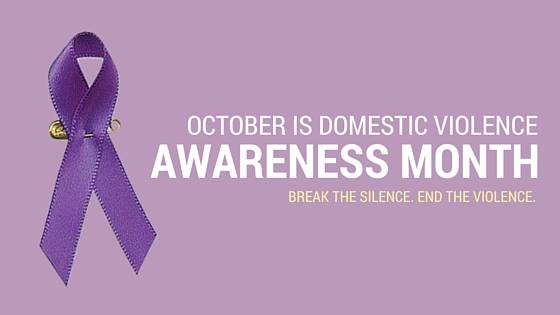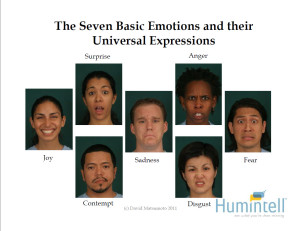
October is Domestic Violence Awareness Month. We are dedicating this month to draw attention to this unspeakable crime and continue efforts to raise awareness and stop the violence.
For the month of October, save 25% on any ID Threats Product with code DVAM at checkout. SHOP NOW
The Staggering Stats
According to the WHO, across their lifetime, 1 in 3 women, around 736 million, are subjected to physical or sexual violence by an intimate partner or sexual violence from a non-partner.
This number increased sharply during the COVID-19 pandemic, leading some to call domestic violence a pandemic within a pandemic.
According to Time Magazine, growing evidence shows the pandemic has made intimate partner violence more common—and often more severe. Surveys around the world have shown domestic abuse spiking since January of 2020—jumping markedly year over year compared to the same period in 2019.
Research conducted by the University of California, Davis suggests that extra stress in the COVID-19 pandemic caused by income loss, and lack of ability to pay for housing and food has exacerbated the often silent epidemic of intimate partner violence.
The Aftermath of Domestic Violence
 See below for Kat Masley’s personal story on being a domestic violence survivor. Originally published on NCADV’s blog, re-printed with permission.
See below for Kat Masley’s personal story on being a domestic violence survivor. Originally published on NCADV’s blog, re-printed with permission.
“I don’t give a shit about your stupid little teen soap opera.”
A seemingly simple statement, albeit a bit nasty. But it was said with such vitriol that it stopped me in my tracks for a second. It was the first time he had ever spoken to me like that, and I was caught off guard by the gruff in his voice. All I wanted to do was watch a show that comforted me, and I was super confused as to why he was reacting this way. I ultimately shrugged it off. It was only years later as I was reflecting on my life with this man that I thought, “Wow, that was a red flag that I so easily dismissed.” It was my first peek into the guy I’d wind up calling “Mr. Hyde.”
Cue to six years later and I’m sitting in Planned Parenthood waiting for the doctor to come in and scrape out the cluster of cells that could have one day been our baby. Only I found out I was pregnant shortly after discovering he was cheating on me. The days (and very long nights) leading up to that moment were filled with insomnia, tears, screaming, tremor-inducing anxiety, intimidation, other women, deep depression, questioning my sanity, 911 calls, and what very closely resembled a drinking problem on my part. The days after that moment were, and still are, loaded with PTSD and night terrors.
Whenever I displeased him, I was met with an array of consequences. One night, my belongings and I were (literally) thrown out of the house into an ice storm at 2 a.m. We had been drinking, and I had no choice but to sleep it off a bit in my car, being that I was an hour away from my home. I then proceeded to drive home at four in the morning, still not sober, in an ice storm. Could he see my car was there for a few hours? Yup. Did he attempt to see if I was OK or ask me to come back inside? Nope. I was serving my sentence and he’d be damned if he didn’t teach me a lesson.
Another time, after bringing up yet another one of his indiscretions, I was backed into the corner of the kitchen, scared stiff as he punched the table in front of me. Fearful that the next object might be my head, I attempted to call 911 while not making it obvious that I was trying to do something on my phone. My acting skills went out the window, and my phone went across the kitchen.
I left a million times. The sick cycle of abuse got me, though, and I continued to go back. Abusers are extremely skilled at “love bombing” and discarding. It was like being on a see-saw, only by myself. The back-and-forth became an unsteady way of life that I thought I deserved. I was always made to feel it was my fault, so I kept returning to the relationship. I didn’t realize until years into it that what I was experiencing was abuse, and it was only at the hands of a few close friends that I was able to come to this conclusion — I was blind to it.
I discovered what gaslighting was, though I wasn’t self-aware until the tactic had long been used on me. He systematically assaulted my reality and twisted it until it became unrecognizable, even to me. In short, he had convinced me I was losing my mind. I started to believe that I didn’t, in fact, properly recall certain events or conversations. Or perhaps I misheard. Or my favorite, he “misspoke”, and therefore I should only take heed of what he was saying NOW.
Signs of PTSD still linger. I have very negative reactions to loud voices/yelling or if someone hits or slams something around me. It feels as if my insides start eating themselves, in the hopes that I can inevitably decrease into nothing and I don’t have to endure what’s happening around me any longer. That’s one of the sensations I recall being constant in my time with him: Trying to shrink. Wanting to become as physically small as possible. Willing myself to be invisible.
The aftermath of an abusive partner is not pretty. Being purposely kept off-balance for six years while being mentally terrorized has long-lasting negative effects. I am still learning how to process and deal with it all, years after that pivotal moment in PP. That moment when I decided that I would not allow a child to grow up with such a man as its father. When I realized having a baby would mean I would be tied to him for the rest of my life. That moment when I finally said, “Nope.”
It’s been four years and four months since sitting in that operating room. I left him for the last time after my abortion. I moved out of my home state. I’m hyper-vigilant when it comes to anything that might relate to him. For example, the thought of visiting home/friends is a daunting one. I wonder how to plan/who to tell so as not to have word spread that I’m in town. I have given very few people my address or any details about where I live for fear of a surprise guest. Little things like this, that most people wouldn’t stress about, have become a mandatory way of thinking for me. Another thing I’m still trying to work out.
These days I tell myself it can only get better. It doesn’t have to haunt me forever, though I understand that it still might mess with me a bit in the coming months and maybe even years. But at the end of the day I think of it this way: It’s a lesson, not a life sentence. I am the strongest person I know.
Kat Masley is a New Jersey-born artist & writer. After considering publishing this blog anonymously, she decided that is was HER story to tell, any way she wanted to. She hopes it allows others who may be in her situation to see that there is hope, light at the end of the tunnel, and within you, a strength you never knew you had. Kat currently lives in Los Angeles, CA, and is beyond grateful she has her life back. Follow her on Twitter and Instagram
If you or someone you know needs help, please reach out to the National Domestic Violence Hotline.
The post Domestic Violence: A Pandemic Within a Pandemic? first appeared on Humintell.

 Staying Jolly for the Holidays
Staying Jolly for the Holidays




